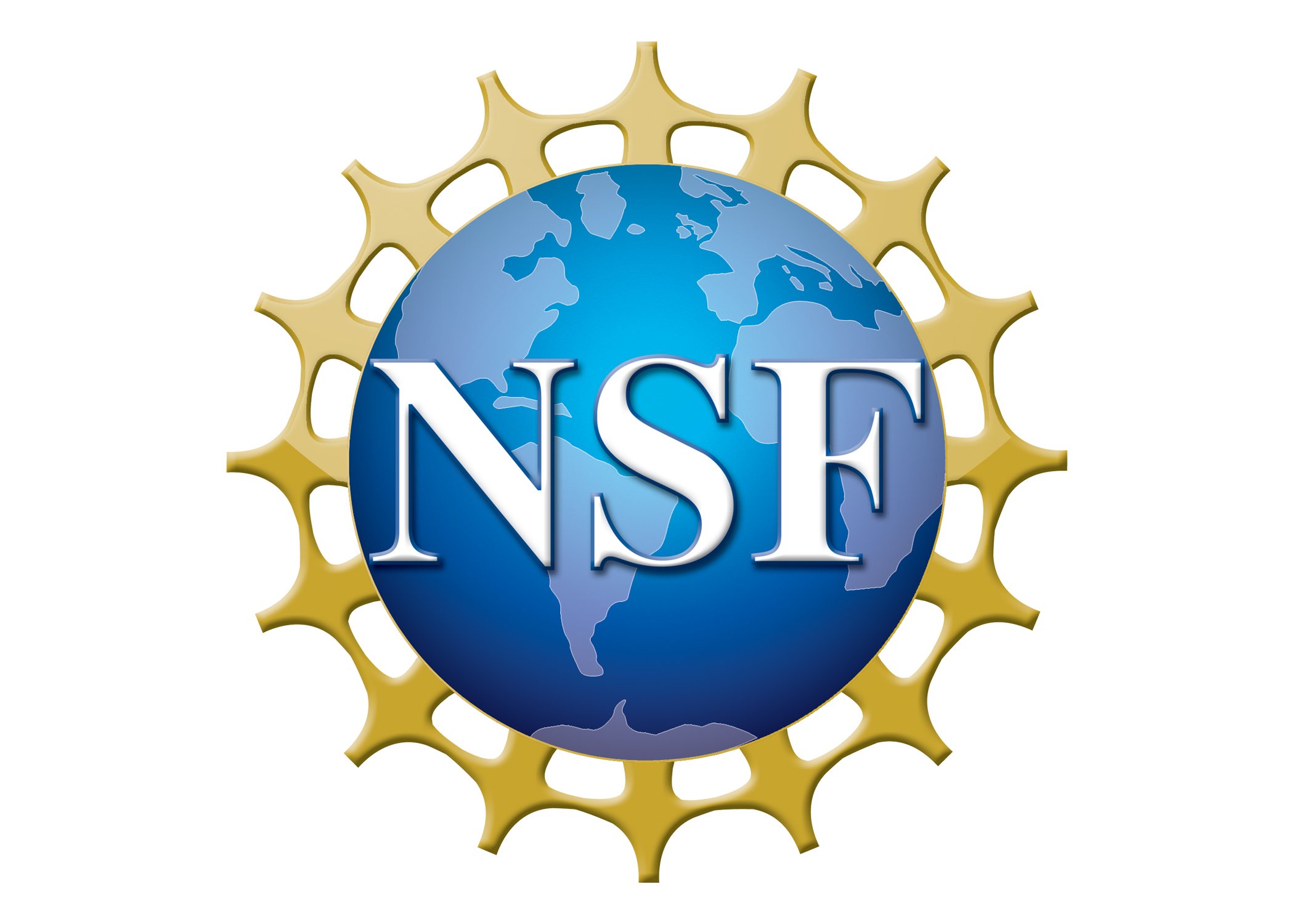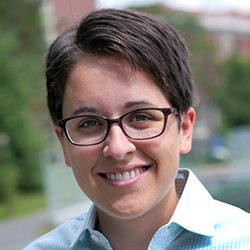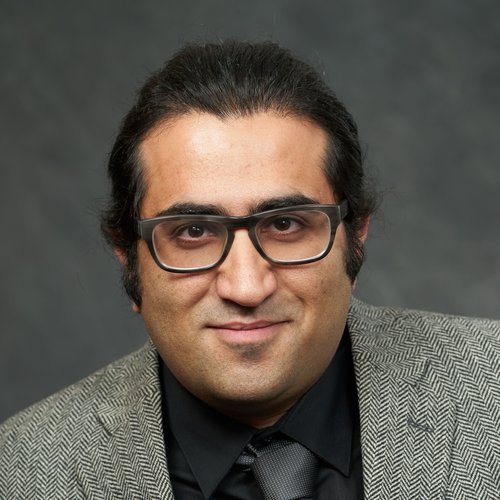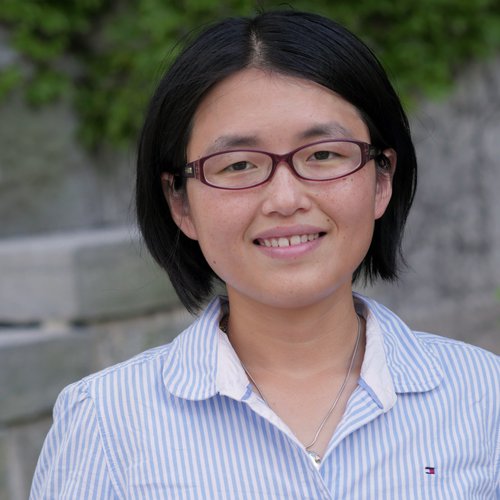Five NSF CAREER Awards a Record for A&S
Professors John Franck, Brett Jakubiak, David Kellen, Davoud Mozhdehi and Minghao Rostami have been awarded five-year CAREER grants to support their innovative research and educational outreach.

2022 is proving to be a record year for research funding in the College of Arts and Sciences (A&S) as five of its faculty members have been awarded National Science Foundation CAREER awards. That number marks the most-ever awarded to A&S in a single year, as the previous high was three in 2009, 2011 and 2014. According to NSF, the CAREER program is their most competitive award in support of early-career faculty who have the potential to serve as academic role models in research and education. Around 500 are conferred annually.
This year’s CAREER award recipients are John Franck, assistant professor of chemistry, Brett Jakubiak and David Kellen, both assistant professors of psychology, Davoud Mozhdehi, assistant professor of chemistry and Minghao Rostami, assistant professor of mathematics. The five-year awards empower each faculty member to integrate research into instruction and encourages awardees to think creatively about how their research will impact their education goals and, conversely, how their education activities will feed back into their research.
Alan Middleton, A&S associate dean of research and scholarship, says, “These awards affirm the outstanding potential for these newer faculty members to make novel contributions to both research and education. They are a testament to the College's and University's standing as a premier destination for research excellence."
Mapping Water at the Nanoscale Level

One of the first things we learn about the human body in biology class is that it is composed mostly of water. In fact, water plays a critical function in just about every life process, even down to the nanoscale level. In biological systems 100,000 times smaller than a piece of human hair, water coats and holds together the cellular machinery, which are the proteins that help a cell function. But one of the challenges for researchers studying water at the nanoscale level is its non-uniform behavior. Some patches of water move slowly, like syrup, while at other sites it is less viscous, behaving more like normal water. When proteins displace water at one site, it might release heat, while the same process at another site might generate cold.
Even though these varied conditions play an important role in determining the forces that drive the cellular machinery, there are relatively few methods to predict or measure what different patches or pockets of water at different locations look like. Through his project, "Spin Dynamics Measurements of Site-to-Site Variations in Hydration Water at Soft Nanoscale Interfaces," John Franck, assistant professor of chemistry, will develop instrumentation and software which will help researchers explore how properties of water at the nanoscale level control the function of cellular machinery.
Franck and his research team will use chemistry to make and isolate proteins and label them with special molecular tags, while using the principals of quantum spin physics to help develop and interpret measurements of those systems. “We are learning how to map out the non-uniform behavior of water at the nanometer-scale, and to connect those observations to the functions of materials and of cellular machinery,” says Franck.
This work could help researchers better predict how proteins work and how they respond to different kinds of forces. “We’re developing a practicable measurement tool that will provide experimental data to fill these gaps in our fundamental understanding. By filling those gaps in understanding, we’ll get better predictions of the forces that determine the structures and interactions of the nanometer-scale machinery inside the cell; that translates to a framework for designing better drugs and better materials,” Franck explains.
Franck will work with a diverse range of students on the project, teaching them about the possibilities of employing modern technology and programming to build new types of chemical characterization tools.
The Power of Affectionate Touch

Studies have shown that sharing the embrace of a partner or someone close to you or hearing them say “I love you” can improve emotional well-being. While previous research has stated that physical affection helps people cope with stress, improve behavior during conflict and create more positive perceptions of one’s relationship, questions remain as to why affectionate touch is beneficial for individuals and their relationships.
Nowhere have the negative effects of isolation and lack of physical contact been more evident than during the pandemic. The lengthy lockdown period resulted in many friends and family losing all sense of routine physical contact. So how does affectionate contact, or lack thereof, affect emotional well-being? Brett Jakubiak, assistant professor of psychology who runs the Close Relationships and Healthy Living Lab in A&S, will embark on a project called “Modeling the unique effects of verbal and physical contact on well-being,” to broadly assess affection by examining the psychological effects of physical contact that differentiate it from verbal affection.
According to Jakubiak, the research will answer three primary questions: What are the unique benefits of affectionate touch (beyond benefits provided by verbal affection); Why does affectionate touch have those benefits (i.e., what psychological mechanisms underlie unique benefits of affectionate touch); and Who benefits from engaging in affectionate touch, and when (in what contexts) are these benefits most pronounced?
“The ultimate goal of this project is to advance knowledge on fundamental aspects of how people think about and navigate their close relationships,” says Jakubiak. “From there we can inform effective and scalable interventions to protect and enhance personal and relationship well-being.”
As part of the project’s educational component, students working with Jakubiak will develop methodological and analytical expertise, receiving direct training on designing, conducting, and analyzing multi-method studies. In addition, the project supports the development and distribution of resource toolkits that help undergraduate students produce independent research proposals.
Improving Memory Modeling

We’ve all been out in public and had a moment where we recognize someone but can’t quite remember their name or where we have seen them before. We can contrast this non-specific feeling of familiarity with other situations where we are able to explicitly recall episodic details about someone (e.g., they sat in front of me in 10th grade English class). In recent decades, psychologists have made considerable advances in understanding people’s ability to recognize, and the different subjective experiences associated with it (e.g., familiarity versus recall).
Many of these advances were achieved through the development of formal, computational models that characterize the different cognitive processes underlying people’s recognition memory judgements regarding events, objects, or people. But with multiple models out there, many of them offer alternative characterizations and create a problem in that the same data can be interpreted in incompatible ways. Through his project, “Recognition Memory Modeling: Testing Foundations and Extending Boundaries,” psychology professor David Kellen will develop a body of experimental data and analysis methods to work toward a single validated account of recognition memory.
“This project will not only allow us to further refine our current theoretical understanding of how people remember, but also develop strongly validated measurement tools that can be used by researchers and practitioners in applied contexts,” says Kellen. The tools will help researchers better answer questions and measure recognition memory across lifespan and make informative comparisons among different clinical populations, such as Alzheimer’s patients.
“Instead of just saying that one group performs worse than the other, we can attribute these differences to specific cognitive processes,” says Kellen. These models can also be used to understand the roles that these processes play in different circumstances, for example when people try to recognize stimuli encountered in emotionally-charged contexts.
Kellen’s project will generate coursework on the foundations of psychological science as well as an undergraduate training program on formal-modeling methods targeted toward increasing the graduate-level representation of members of historically underrepresented groups.
“Undergraduate students are rarely exposed to formal modeling in psychology,” Kellen says. “By developing a training program that is freely available and actively connects students with researchers throughout the country, we hope to increase the number of U.S. college students, especially those from historically underrepresented groups, so they are equipped to take on the scientific challenges of tomorrow using state-of-the-art formal methods.”
Revolutionizing Mixtures

You may not know it, but emulsions are all around us. From mayonnaise to butter to moisturizer, emulsions are mixtures of two or more liquids that normally don’t mix. So how exactly do two “immiscible” (unmixable) liquids remain blended for an extended period? The short answer is surfactants.
Using mayonnaise as an example, two of its main ingredients are oil and vinegar – two liquids that want to separate from one another. By adding a natural surfactant – egg – it serves as a lubricating agent and allows the oil and vinegar to blend. Emulsions containing surfactants are used in everyday products ranging from food to cosmetics to pharmaceuticals.
While certain surfactants are naturally occurring, others are often synthetic, non-biodegradable and in some cases even toxic, with the potential to cause harm to the environment. Chemistry Professor Davoud Mozhdehi’s project, "Post-translationally Lipidated Biopolymers As Multiphasic All-Aqueous Emulsions," seeks to advance the understanding of all-aqueous – or water-based – emulsions. By using more aqueous emulsions, manufacturers could one day eliminate the need for oil or surfactants in many commonly used products.
As Mozhdehi explains, most of the emulsions we see in everyday products are oil born, meaning they are oil-in-oil or oil-in-water. “We are really good at manipulating these emulsions, but we aren’t very good at manipulating water-in-water emulsions,” he explains. “When two droplets of water are next to each other, they just want fuse and not separate. We are trying to find a trick to keep two water-based layers immiscible with each other for a prolonged period of time.”
For inspiration, Mozhdehi and his team are turning to one of the few places two different water droplets remain immiscible from one another – inside a cell.
“Cells in our body sometimes create water-in-water emulsions for a short period of time to accomplish a certain task, for example to develop a coping mechanism to stress,” Mozhdehi says. “Instead of creating surfactants, the body modifies the protein which changes the properties of the water around it. That’s how you can create an aqueous droplet.”
By studying this process in a test tube, Mozhdehi hopes to recreate one of nature’s “tricks” and create water-in-water emulsions that can be precisely controlled to have user-defined characteristics. Employing this technology to products could potentially replace traditional oil-based emulsions in food processing, cosmetics, biosensing and delivery of pharmaceuticals.
Educational activities supported through this project will train undergraduate and graduate students in bio-enabled technologies. For example, this award will support a collaboration with Donald Carr, professor in the College of Visual and Performing Arts, to develop a bio-engineered microbial textile mill for production of biodegradable fibers from inexpensive (and sustainable) feedstocks. This interdisciplinary project—which was initially supported by a collaborative CUSE grant – aims to attract design students, especially those underrepresented in STEM, to the field of biotechnology. The potential for this research to have a positive ecological impact on the synthetic materials field will not only educate individuals about the harmful effects of current approaches, but also contribute to a future of sustainable manufacturing.
Modeling Micro-Swimmers

Organisms like fish can swim through water with ease, but for tiny micro-organisms such as bacteria, sperm and algae, swimming through their surrounding environment is not as easy. To get from point A to point B, these micro-swimmers propel themselves using wiggling micro-structures such as cilia and flagella. The remarkable efficiency of microorganisms at moving and navigating through a surrounding fluid despite their small size has inspired researchers to try and employ those systems into microfluidic devices and micro-machines capable of delivering sperm, drugs and cells.
Mathematics professor Minghao Rostami’s project, "Towards Harnessing the Motility of Microorganisms: Fast Algorithms, Data-Driven Models, and 3D Interactive Visual Computing," seeks to improve understanding about micro-swimmers’ movement and shed new light on how their motility can be harnessed for therapeutic purposes. Rostami, whose research specializes in computational fluid dynamics, will develop data-driven models and computationally efficient algorithms to simulate the dynamics of these micro-swimmers. She will also produce a three-dimensional interactive visual computing system that will allow for real-time fluid visualization and manipulation.
“Knowing how to arrange bacteria and cilia to maximize their fluid moving capability is a difficult problem that is understudied,” says Rostami. “Using the proposed models and algorithms, our goal is to achieve optimal designs for bacterial and cilia carpets.”
The mathematical models developed by Rostami aim to replicate the swimming motion of microorganisms based on existing data. This project will improve upon conventional mathematical models that involve complex partial differential equations that require enormous amounts of computing power.
Rostami and collaborator Duane Graysay, assistant professor in the School of Education with a joint appointment in Department of Mathematics, designed the project’s education component which will provide direct training and research opportunities for undergraduate and graduate students, postdoctoral researchers and high school teachers. Their project also includes plans to develop virtual reality games based on micro-swimmers to be exhibited at the Museum of Science & Technology in Syracuse, NY, as well as public libraries.
The NSF’s CAREER award program started in 1997. Over the last 25 years, 27 A&S faculty have been CAREER award recipients. Find out more about the Faculty Early Career Development Program.
Featured
John Franck Assistant Professor
Brett Jakubiak Renée Crown Professor in the Sciences and Mathematics and Associate Professor
David Kellen Associate professor and Director of the Ph.D. Program in Cognitive Psychology
Davoud Mozhdehi Associate Professor and Director of Graduate StudiesMinghao Rostami Assistant Professor
